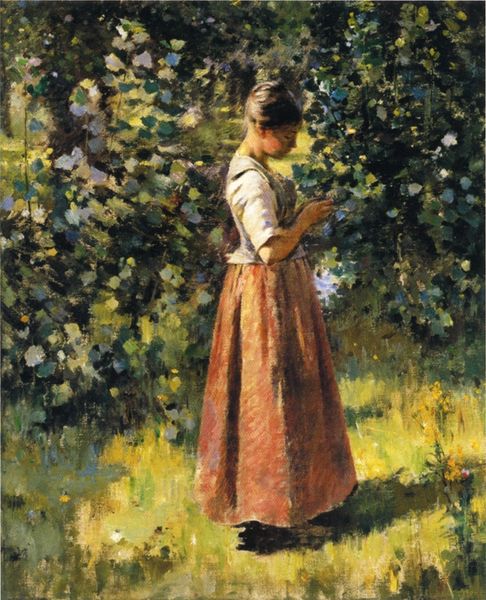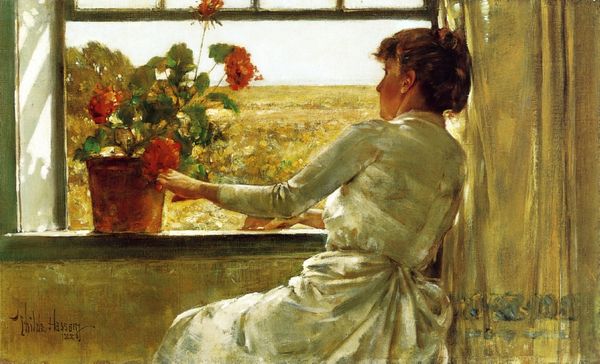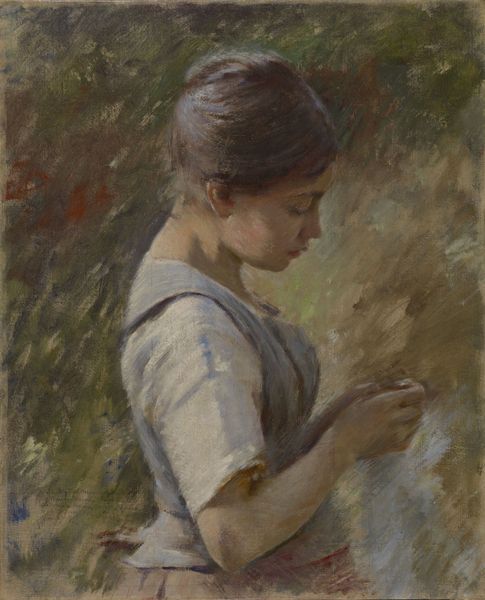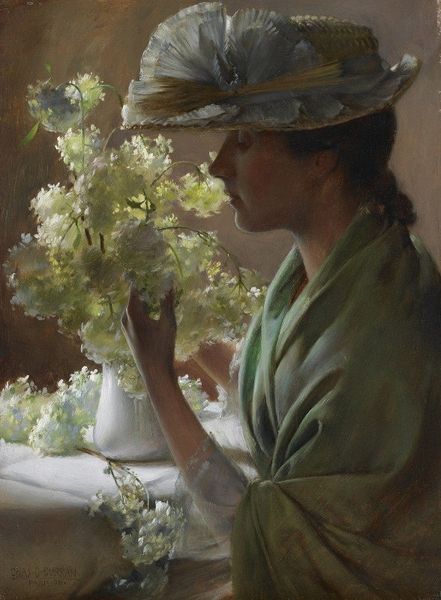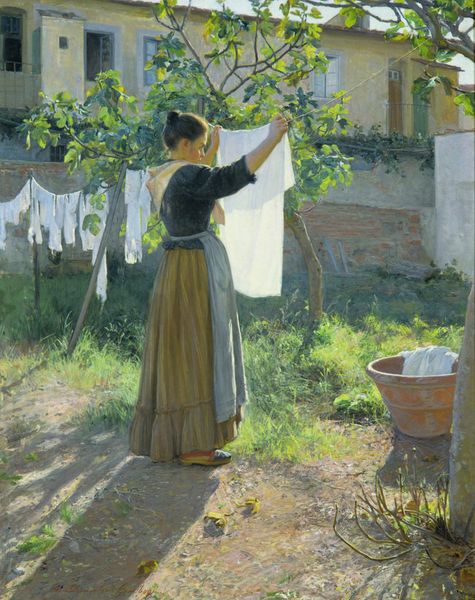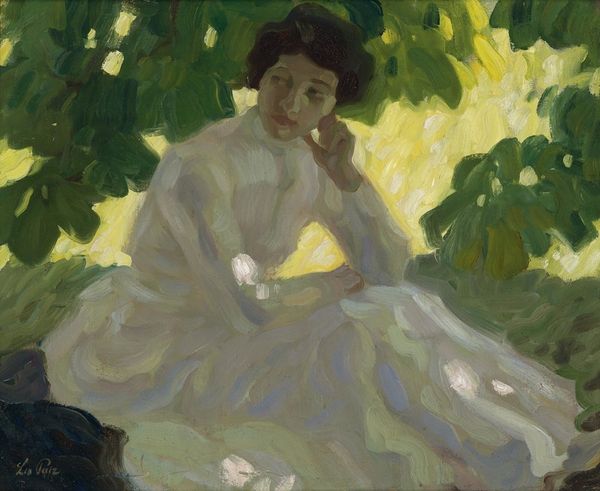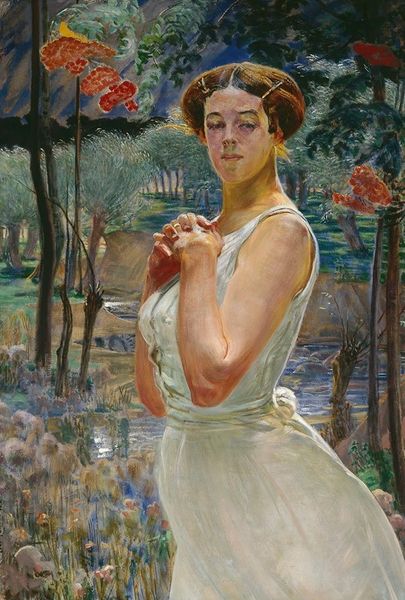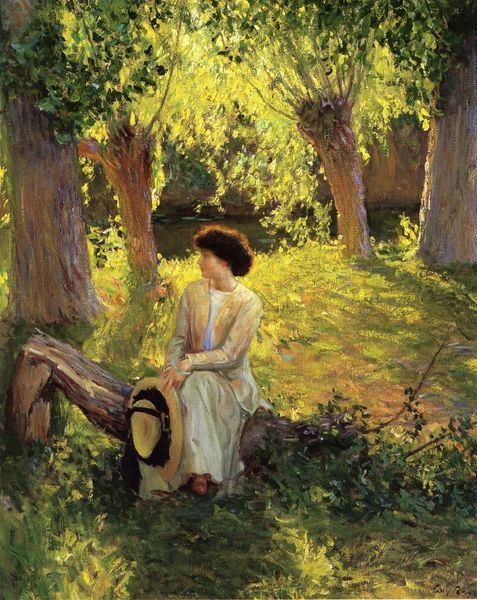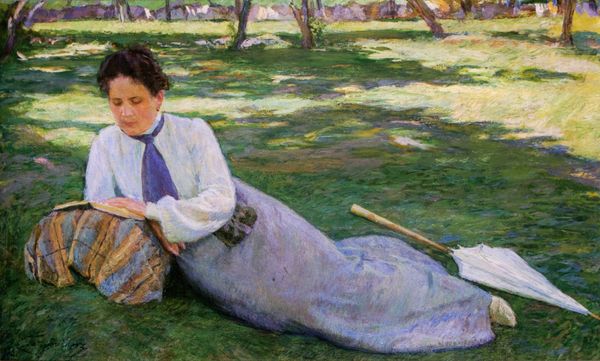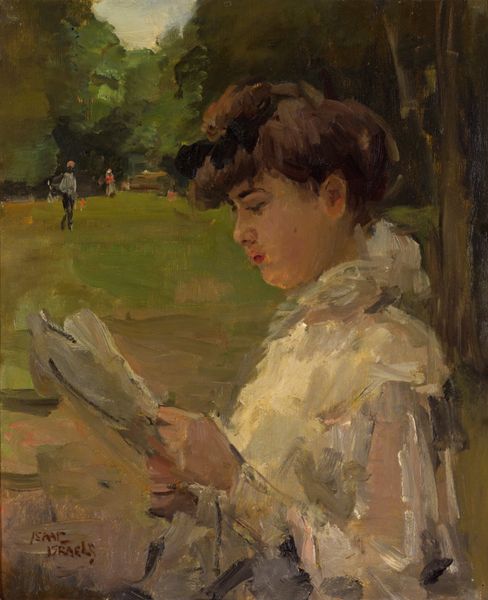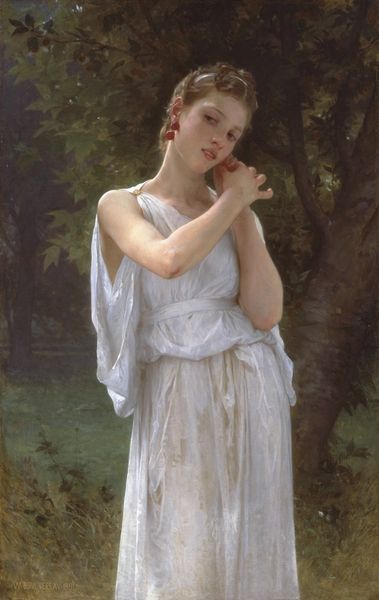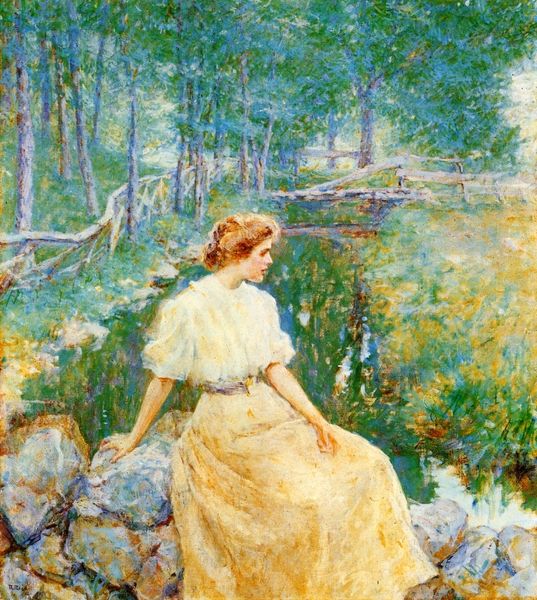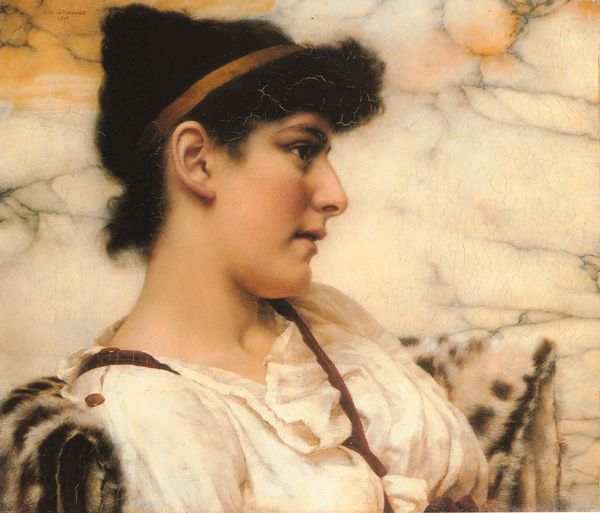
painting, plein-air
figurative
painting
impressionism
plein-air
landscape
genre-painting
Copyright: Public Domain: Artvee
Curator: This is Charles Courtney Curran's painting "Shadows" from 1887. It beautifully captures an everyday scene, infused with a particular, soft light. Editor: My first impression is how grounded and tranquil the composition feels. The repetitive pattern of the shadows cast on the laundry provides an unexpected, almost textile-like quality. Curator: Precisely! And I think it’s important to view this scene within its historical context. Consider the late 19th century and the increasing industrialization; Curran seems to be celebrating domesticity and the labor often unseen and unacknowledged. This painting presents us with the beauty found in these simple, daily acts. How does the material process relate to these domestic spheres? Editor: Thinking about the work of putting laundry out to dry brings forth questions of labor and domesticity, revealing the inherent class and gender implications, which remain relevant today. These garments become a record of work performed. We see this laborious act painted through an Impressionist lens which emphasizes how our clothes connect us through these interwoven fabrics. Curator: The play of light and shadow in "Shadows" is quite intentional, further accentuating those links. Curran employs the en plein air approach, capturing the nuances of outdoor light, creating a contrast between the fleeting nature of light and the solid presence of domestic labor. These sharp contrasting light effects can create division in domestic life where private/public work spaces are contested or harmonious spaces. Editor: The seemingly mundane subject matter also resonates deeply with the history of artistic production itself. Laundry becomes the ground for reflection of life’s repetitions; like paint repeated upon a canvas; wash, dry, wear, repeat, with a process rooted in material engagement. Curator: Looking at this from a perspective of intersectional narratives is how it connects gendered expectations, socio-economic status, and the beauty Curran finds in a working-class woman in her labor. The act of doing laundry, an historical form of social exchange of clean textiles represents these important roles in historical and contemporary contexts. Editor: Considering the materials depicted – the fabrics and clothes pegs alongside Curran's painterly application of pigments - makes you appreciate art and labor as essential acts. The material process connects both spheres together through the tangible form it yields. Curator: Exactly, this exploration enriches our comprehension of the artwork and how societal, philosophical and feminist narratives shape our comprehension. Editor: The artist highlights the deep interconnectedness found through production of materials, culture and societal implications.
Comments
No comments
Be the first to comment and join the conversation on the ultimate creative platform.
